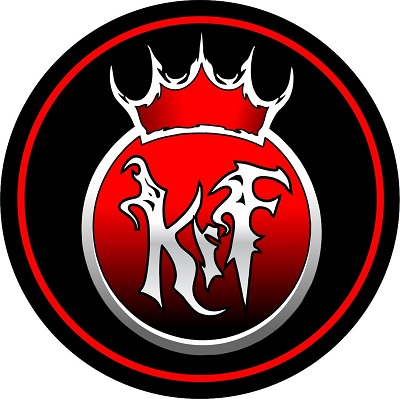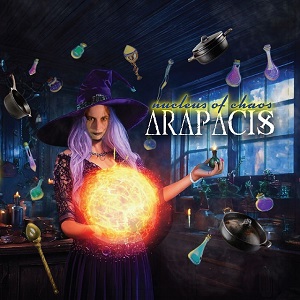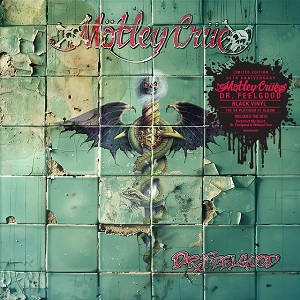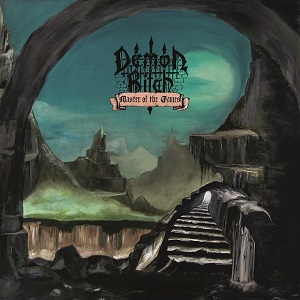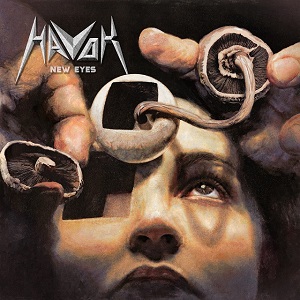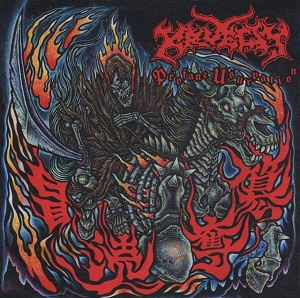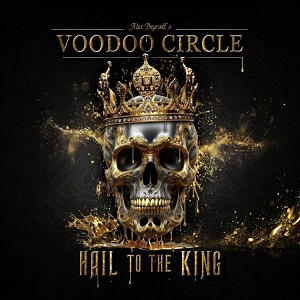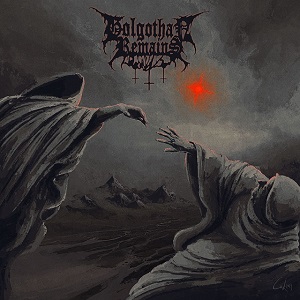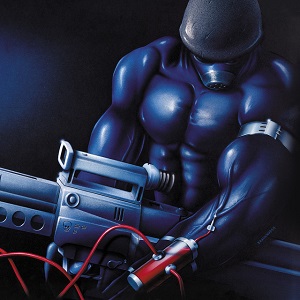APRIL WINE – Harder… Faster: 35 Years Old And Not Slowing Down
October 31, 2014, 10 years ago

This month marks the prestigious 35 year anniversary of what would turn out to be the heaviest rocking album from Canuck legends April Wine. Tame year for hard rock, 1979 was, and so it was perhaps even weirder that the not always guitar-charged April Wine would craft a record this loud. Still, the trajectory was there after the similarly tough First Glance, and then into the band’s successful The Nature Of The Beast album from 1981.
But back in the summer of ‘79, there was a measure of relief that the band finally had cracked the States. “After a while it got to the point where we were doing so well in Canada that we got it into our heads that we didn’t need to bother hustling our asses off in the States,” said band leader Myles Goodwyn at the time. “We just weren’t that desperate anymore. We wanted to go back to the States first class if a single broke and if there was a demand. Our attitude was that if people wanted to see us, we’d be there. And that’s pretty much where we blew it, because what we should have been doing was slugging it out like Rush did in the beginning, playing anywhere and everywhere to build up that American following. Things weren’t really going that great for us until we signed with Capitol. We wondered if we should keep doing it because we really weren’t accomplishing a lot in America and the Canada thing was beginning to get old. It’s a whole fresh thing for the band to be having solid American support after all these years. We were getting lazy and laid-back in Canada, but now that we’re gearing everything towards breaking in the States, the band is actually excited again.”
“It just came out that way,” notes Goodwyn, years later on Harder... Faster, Myles usually known for planning the tone of a record way in advance. “When Brian Greenway came in, our sound changed. We got harder, we had another guitar, we went to another level. It happened with First Glance in ‘78 and it was the first time we sold a lot of records in the States. It was a whole attitude at that point around getting harder, getting tougher, having more of a guitar front. And we were experimenting with a lot of keyboards, synthesizers, strings, unusual instruments, all kinds of singers, background singers, girls, guys… it was a different kind of approach than the one we had later on. And when Brian came in, we found that it just got rockier automatically. So First Glance did really well and then it was natural to just keep the harder edge. It kinda found its own self, you know?”

So here the band was, with no less than three guitarists. “Well, we’re really different,” explains Brian, when asked to articulate the different styles represented by the three six-stringers. “I have a serious blues influence, and I always will, I guess. My mentors were Clapton, Ritchie Blackmore, Hendrix… growing up as a teenager listening to these guys in the late ‘60s. They were just heaven. Myles, he doesn’t really list anybody, he just plays. I don’t know what his influences were. And Gary Moffet was a very different style as well. It wasn’t so much blues-oriented as I was. Gary is a more technical player, like a George Harrison. And Myles is a very quick player and very knowledgeable as a player, but he doesn’t think of himself as a guitar player so much as a singer. We never had, okay, this is your solo, go play this. It was more like, whoever wanted to try it. The three of us would go in, and whoever came up with the best idea would play it. We would experiment. I would say hey, I have this idea, and certain tracks were sort of built in the studio.”
“Harder... Faster was definitely a lot of fun to record,” continues Brian. “We lived up at Le Studio in Morin Heights for like three months doing it. We had tabletop hockey going on; we had all kinds of stuff (laughs), other than just the recording. That’s my favourite time. The least is probably recording Nature Of The Beast because we were in England, and I was stuck there not appreciating where I was at the time. I felt like I was trapped in the studio, which was fine. You get a lot of things out by playing. Nature Of The Beast, yeah, that was a tough one but it was worth it. Harder... Faster was more like a party. And that title, that came from the Marilyn Chambers movie, Behind The Green Door. We watched a little porn at the studio, more for light relief than anything else. The title wasn’t my idea, but I do I remember giving First Glance its title. Because I saw the graphics for it, and they were looking for a title and I said, ‘Hey, how about First Glance?’ But yeah, if you actually listen closely to the end of 21st Century Schizoid Man, we actually snuck that clip from the movie into the background.”

Myles corroborates the derivation of the title, having overheard the boys watching the movie in the lounge. He recalls looking up through the window of the control room’s “foot-thick” door, and then opening the door and hearing that part in the movie, quickly writing it down, figuring the title of the record had just been born.
“That’s right outside of Tempo Studios,” answers Myles, asked about the intersection depicted on the cover of the soon to be finished album. “I was going to say the original one, but the original one is downtown Montreal. This is not quite downtown. This is their second location and it’s right outside their studio doors. There’s a song we have called ‘Hot On The Wheels Of Love’ from First Glance. We did that at the same studio and at the same intersection. You hear the screeching tires at one point in that song. And basically we had Billy Szawlowski, one of the engineers who had a ‘70s Corvette, start at one end of the block and come screaming towards the opposite end of the block and we had microphones out, people standing back (laughs). The idea was just to hit the brakes and we were going to record the screeching tires live. And our first attempt, honest to God, he comes barreling down this long block and a little old lady begins to cross the street, completely oblivious to what’s going on, our yelling and everything else. But we were able to get him to slow down and get her out of the way. So the screeching of those tires was recorded right outside the studio door.”The opening track on the album set the tone for the whole, solid, well-recorded, confident, accessible yet heavy batch of songs to come. “I Like To Rock” announced the album grandly; grandly, by design. “It’s really a very simple song,” explains Myles on this concert staple, perhaps the most-played song the band has on radio today, although there are many. “What I used to do is try and write… I always want to have a reason and a direction. And the live part was so important to the band and it was important to have a great opening song and it’s great to have a great ending song. ‘Roller’… I haven’t been able to find a better ending with the ‘bye, bye, bye, bye, bye.’ You can’t start off with that (laughs). So ‘I Like To Rock’ was written to have something to start the show with (sings it), that whole idea of slowly building a tension. And the whole lyric was ‘I like to rock. You like it. I like it.’ You know? And at the end of it, which is the Beatles and the Stones, ‘Day Tripper’ and ‘Satisfaction,’ that just came out of jamming on the end, where Brian or I played one riff, and the other guy jumped in with the other one and it just meshed along with the original theme.”

Myles co-produced Harder… Faster with Nick Blagona, who had had quite a career both before and after working with April Wine. “Well, Nick is a genius in his own way,” offers Myles, “and a sweet guy, a great guy. I started that record at Tempo Studios here in Montreal and we were probably about halfway through it and I wasn’t happy with was going on and I was persuaded to go up to Morin Heights and finish it up there with Nick. He had incredible ideas.” Ideas notwithstanding, the sessions were designed to rock. The band brought in eight Marshall stacks, lined them up and wired them together, dubbing the configuration The Wailing Wall. Every guitar part on the album was put through the Marshalls.
Still, Blagona’s sense of sophistication was on display for the album’s second most celebrated song, an effervescent but quite complicated popster called “Say Hello,” a song that is a studio tour de force, something one might expect out of Boston or Journey. “That didn’t sound anything like it ended up,” laughs Myles. “What he did on the bass was create a lot of holes. He had a whole different feel on the bass which had been recorded at the other studio, at Tempo. And he made that whole bass track come alive and go into a different space. He turned me onto recording the chords. The song has three chords. That’s it (sings it), three chords, all verses, intros, solos, everything is three chords. So what he did is instead of having me play a chord, he would break the chords down into notes. There might be four strings or four different notes I’m playing for each chord, but each one was individually recorded, each note to form the chord. And then that was gated with a high hat. So you get this bubbly (makes ticking noise). And it’s like, ‘wow’ (laughs). This is my song and those are my chords but this is like, so cool! It’s definitely in a different place. So he brought a lot to table.”
Side two of the original vinyl kicked off with a fairly dark song in comparison to April Wine’s generally upbeat vibe. “Before The Dawn” was even faintly dirge-like, with an impassioned vocal from Brian. “’Before The Dawn’ was one of the first songs that Brian wrote,” notes Myles. “I can’t tell you anymore about it except that everyone really liked it. It was an arrangement that was really interesting because it goes up and down and back and forth and had nice big open E chords and arpeggios and stuff and Brian’s vocal. We just really liked the song.”

Brian elaborates on the track’s origin. “We had been playing that live, which we had been doing at that point in our career, with songs we hadn’t recorded yet, to fine-tune them to see what the response was. So when we went in the studio, we knew how to do it. It was a story about a girl I knew in Flint, Michigan years ago named Lori. I remember writing that song in the hallway of a townhouse I rented in Point Claire years ago, and it took about half an hour to write. It’s just one of those things that fell out, and I wish I could do that more often. I have no idea why Myles didn’t want to sing it, but he didn’t, so I got that one.”
Next Up was “Babes In Arms,” in many ways, the album’s heaviest track, a hot riff rocker with warm, thick guitar tones and amazing vocal harmonies. “Oh my God! That’s just a stupid little pop song,” laughs Myles. “I remember I was reading a book about old movies, and there was a movie called Babes In Arms and I think it was Mickey Rooney. ‘Lovers are babes in arms’ and I thought, ‘babes in arms,’ what a great idea, what a great line. And then I just wrote this silly little pop song around it.”
Another heavy highlight of the record was the band’s celebrated and eternal cover of King Crimson classic “21st Century Schizoid Man,” April Wine rounding a few of the edges off the original, creating a warm, accessible yet heavy metallic version of this nightmarish prog octopus.
“Well, I’ve always loved that song,” notes Myles. “That came out in 1970, because I remember it was our first summer in Montreal. We had left Halifax on April 1st of 1970 and that is a record we listened to every day, Court Of The Crimson King. And that song was just outstanding. And in thinking about covers, at that point with three guitars, we wanted to find something that we could really kind of show off with, show what we can do with arrangements anyway. I’m not saying that we were brilliant solo players. But in terms of arranging the three guitars so they all worked together, I thought this was a great vehicle for that. We worked hard on the arrangement to be able to play it the way we did. And as I said, Nick Blagona was part of that. It’s still a song people want to hear and it’s great live. So yeah, Nick was there for ‘21st Century Schizoid Man;’ there was some editing and things he did around that song. It was very exciting because he was on the original session that King Crimson did.”“I remember at that point we were opening for a lot of people, especially in the United States,” offers Brian, when asked what the Harder… Faster tour entailed. “Rush we opened up for, for quite a while, Styx as well. Loverboy opened up for us in Canada a couple times, while they were just getting their first record off the ground. And then of course they weren’t an opening act anymore. Europe, we went over and we did some co-billing with Uriah Heep.”
Specifically however, one of the main jaunts with respect to Harder… Faster turned out to be in support of Nazareth in the States, circa 1980. With the album staying in the Billboard Top 200 for well on 40 weeks, April Wine were soon to begin their first headlining shows stateside--the shows with Nazareth were to be the turning point, with the next album, The Nature Of The Beast, blowing the doors wide open for the band, only to see their career wane after that, through a return to a poppier sound for 1982’s Powerplay.
For the complete track-by-track story of Harder... Faster, see Martin Popoff’s Ye Olde Metal: 1979 book, available at martinpopoff.com or at zunior.com. As well, at zunior.com (or iTunes – see Martin’s site under eBooks), there’s a 98 cent eBook version of the April Wine chapter from the full-length book.


